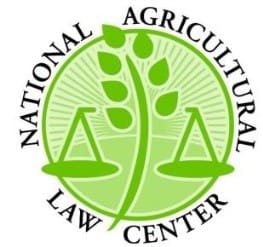A comprehensive summary of today’s judicial, legislative, and regulatory developments in agriculture and food. Email important additions HERE.
ANNOUNCEMENT: Join us TOMORROW at 12 noon (ET) for the next Agricultural & Food Law Consortium webinar: Agricultural Nutrient Management: State Innovations and Local Responsibility. Details available here.
JUDICIAL: Includes food labeling, water law, environmental, and climate change issues.
In ORGANIC CONSUMERS ASSOCIATION, et al., Plaintiffs, v. SANDERSON FARMS, INC., Defendant, No. 17-cv-03592-RS, 2018 WL 922247 (N.D. Cal. February 9, 2018), plaintiffs sued alleging defendant’s advertising materials “mislead consumers about the nature of Sanderson’s chicken products and farming practices.” Specifically, plaintiff alleges defendant statements “100% Natural” and “no hidden ingredients” contradict USDA findings “in which Sanderson’s products tested positive for antibiotics, pharmaceuticals, and other unnatural substance residues.” Defendant argued plaintiffs’ claims are “impliedly preempted due to their interference with the regulatory scheme created by Congress through passage of the Poultry Products Inspection Act (PPIA) and Federal Meat Inspection Act (FMIA).” Court determined that a jury “could conclude that Sanderson’s advertisements are misleading—and violate both the FAL and UCL—without contradicting or interfering with USDA authority.” Defendant’s motion to dismiss denied.
TETON COOP CANAL CO., Claimant, Appellant and Cross-Appellee, v. TETON COOP RESERVOIR CO., Appellee and Cross-Appellant, and Lower Teton Joint Objectors; Farmers Cooperative Canal Co., Objectors, DA 17-0092, 2018 WL 834438 (Mont. February 13, 2018) involved water law issues wherein court considered whether the Water Court erred in determining volume assignments allegedly necessary to administer plaintiff’s 1936 water right claims. On appeal, plaintiff argued the Water Court’s volume assignments of “8,000 acre feet for direct flow under the 1890 Notice and 4,000 acre feet under the 1936 Declaration are clearly erroneous.” Court observed that “[a] finding of fact is clearly erroneous if it is not supported by substantial evidence,” and concluded “there was substantial evidence to support the Water Court’s assignment of 8,000 acre feet to direct flow under the 1890 Notice and 4,000 acre feet to the 1936 Declaration.” Affirmed for defendant.
Don H. GUNDERSON and Bobbie J. Gunderson, Co–Trustees of the Don H. Gunderson Living Trust, Appellants/Cross–Appellees (Plaintiffs below), v. STATE of Indiana, INDIANA DEPARTMENT OF NATURAL RESOURCES, Appellees (Defendants below), Alliance for the Great Lakes and Save the Dunes, Appellees/Cross–Appellants (Intervenors–Defendants below), Long Beach Community Alliance, Patrick Cannon, John Wall, Doria Lemay, Michael Salmon, and Thomas King, Appellees/Cross–Appellants (Intervenors–Defendants below), No. 46S03–1706–PL–423, 2018 WL 849890 (Ind. February 14, 2018) involved a property boundary dispute on land around Lake Michigan wherein State Supreme Court had to determine whether the State “holds exclusive title to the exposed shore of Lake Michigan up to the ordinary high water mark (OHWM), or whether the [plaintiffs], as riparian property owners, hold title to the water’s edge, thus excluding public use of the beach.” Appellate court held the State owns and holds “in trust” the lands under navigable waters within its borders, “including the shores or space between ordinary high and low water marks, for the benefit of the people of the state.” Supreme Court concluded that “the boundary separating public trust land from privately-owned riparian land along the shores of Lake Michigan is the common-law ordinary high water mark and that, absent an authorized legislative conveyance, the State retains exclusive title up to that boundary.”
In AQUALLIANCE, et al., Plaintiffs, v. U.S. BUREAU OF RECLAMATION, et al., Defendants, 1:15-CV-754-LJO-BAM, 2018 WL 903746 (E.D. Cal. February 15, 2018), plaintiffs challenged defendants’ water transfer program moving water “from sellers located upstream of the Sacramento/San Joaquin Delta (Delta) to willing buyers south of the Delta.” Plaintiffs argued defendants’ approval of the project violated the National Environmental Policy Act (NEPA), the Central Valley Project Improvement Act (CVPIA), and the California Environmental Quality Act (CEQA). Specifically, plaintiffs took issue with contracts defendants signed with sellers. Plaintiffs argued that “requiring defendant to include in its contracts the requirement that a contractor abide by ‘voluntary’ best management practices is meaningless, as ‘including a voluntary term in a contract does not transform it into a mandatory term.’” Court disagreed with plaintiff and found that defendants’ project description requiring best management practices was simply “imprecise drafting.” Plaintiffs’ motion for summary judgment denied.
ALASKA OIL AND GAS ASSOCIATION; et al., Plaintiffs-Appellees, v. Wilbur ROSS,* U.S. Secretary of Commerce; et al., Defendants-Appellants, and Center for Biological Diversity, Intervenor-Defendant, No. 16-35380, No. 16-35382, 2018 WL 821866 (9th Cir. February 12, 2018) concerned a challenge to the National Marine Fisheries Service’s (NMFS) listing of the Arctic subspecies of the ringed seal as threatened under the Endangered Species Act (ESA). District court granted plaintiffs summary judgment and defendants appealed, arguing the district court “mistakenly ruled that the NMFS finding that the Arctic ringed seal is likely to be in danger of extinction by 2100 because of sea ice loss and other climate change impacts was not supported by the record and was too speculative.” Appellate court observed that “climate change models show the habitat of the Arctic ringed seals to be diminishing as sea ice recedes,” and that such models “constitut[e] the best available science and reasonably suppor[t] the determination that a species reliant on sea ice likely would become endangered in the foreseeable future.” Reversed.
No LEGISLATIVE or REGULATORY updates due to the federal holiday.
